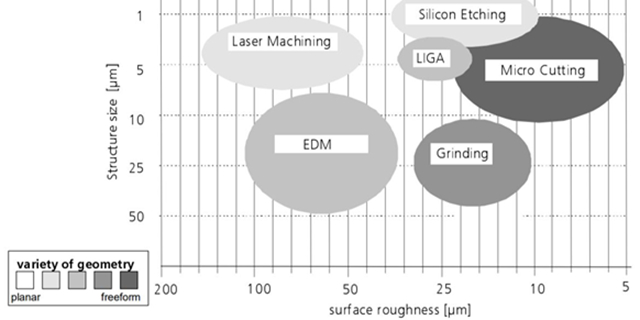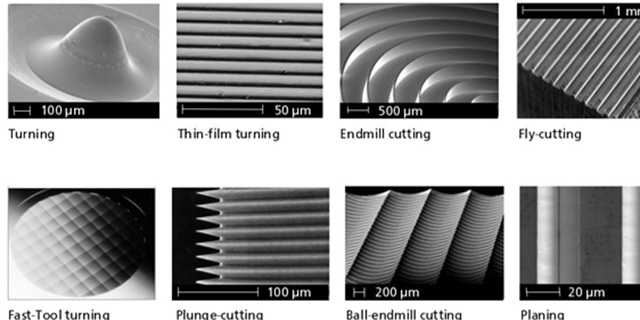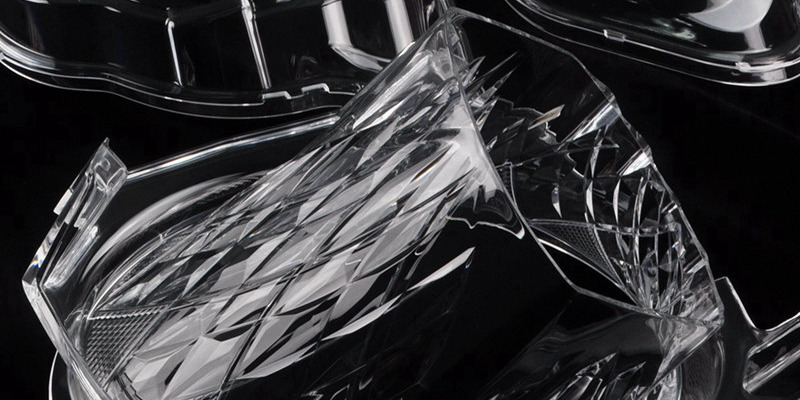Posted on Nov 18th, 2019, | By WayKen Rapid Manufacturing
With the increasing complexity and intricacy of optical components, the precision machining of optical components has entered an entirely new era. For non-complex optical components, the methods outlined in spherical optics have played a key role. These methods comprise conventional grinding and polishing procedures. However, intricate optical components can only be partially manufactured by these conventional processes due to the lack of dimensional accuracy. Such components require the use of multi-axis machining and metrology.
Contact our machine shop to learn more about CNC capabilities for optical prototyping.
Aspherical and microstructured optical components require immensely tight tolerances which are provided by precision cutting processes using diamond tools on ultraprecise machinery. In this way, both high surface finish and tighter tolerances can be obtained. These ultraprecise manufacturing methods are used to obtain dimensional accuracy for both the optical components and their molds.
In this article, we will discuss various types of ultraprecise machining methods, applications, and considerations when choosing a precision machining service provider.
Ultraprecise Manufacturing Methods for Optical Components

Ultraprecise machinery along with diamond cutting tools is mainly used to achieve the fabrication of complex micro-optical components with surface qualities reaching fractions of a micrometer Ra. Achieving complex surface geometries, freeform surfaces and real 3D-structures means that several non-conventional techniques of multi-axis machining are to be evaluated to achieve variable accuracies. The following figure comprehensively outlines various fabrication techniques in this regard.
Just for a reference, the following diagram categorically highlights the difference between freeform and planar optical surfaces.

Therefore, from the graph outlined above, it can be noticed that for intricate freeform optical components, micro-cutting is the only option that ticks all boxes with regard to precision, structure size, and surface finish. Next, we will discuss various tool geometries for the machining of optical components.
The two most important factors in determining the manufacturing quality of optical components are the tool’s cutting edge sharpness and roundness. Hence, special tool geometries are incorporated which include diamond micro-endmills, ball-endmills along with other tools for shaping and turning. Some of the ultra-precise cutting techniques for optical components have been highlighted in the following image.

With a combination of an ultraprecise vibration-free CNC machine, a compact tool holder and the right fixture, a single point natural diamond cutting tool will scrape off material from the workpiece appropriately and efficiently. Its extreme level of sharpness ensures that extremely high yet concentrated cutting forces are applied to the workpiece. This allows for minimal distortions elsewhere and perfect surface finish and form accuracy.
The next subheadings will highlight optical precision machining techniques categorically along with technical details.
Single Point Diamond Tool Turning
The application of this type of machining is in consideration when rotationally symmetrical optical components are to be achieved. It is a highly efficient cutting process. High cutting speeds and high surface finishing with Ra < 5 nanometers are achievable with this technique. The tool used in this technique accounts for the dimensional accuracy of the part in the production. Expert engineers calculate the tool radius along with radius compensation values for the entire tool path during the machining process. For accuracies in the sub-micron range, the tool’s waviness needs to be controlled to a level of 0.1 micrometers of the tool radius.
On the other hand, if simpler surface structures are required, plunge cutting with sharp point tools can be used in this method. The diagram that follows depicts this more explicitly.

Milling and Fly-Cutting
Milling and in particular, CNC milling offers the great capability to machine intricate surface geometries. Optical components with freeform surface finishes are achievable. For optical components like a camera lens, automotive lighting prototypes, a machining service provider with at least 3 axis CNC milling capabilities is required. However, for enhanced and accurate optical surface qualities, having the capability of 5 axis machining is ideal, and good machining service providers ensure that. The three major types of diamond milling tools used for optical components comprise of endmill, ball-endmill, and fly-cutting tools.
Ball-endmills are used for the fabrication of freeform surface geometries with accuracies up to D0.5 millimeters. Good machining service providers can also provide accuracies up to R0.1 – R0.15 millimeters for inside corners. For groove cutting, fly-cutting tools are really useful. Fly-cutting is used where planar surfaces are in consideration. For instance, laser mirrors and pyramid structures for reflectors can be manufactured using a fly-cutting milling process.
Pivotal Role of Precision Machining in Today’s World
In recent times, the requirement of optical components for the electronics consumer market is at its peak. Applications like camera lenses in smartphones, DSLRs, and scanning mirrors in laser printers are worth noting. This comes along with a major challenge for the market i.e. how to ensure cost-effective manufacturing of free-form optical components? Well, precision machining allows us to ensure this. Let us tell you how!
Conventional camera lenses being replaced with single free-form mirror structures made using precision machining allows for not only compactness of camera structures but also massive cost reductions in mass production.
For laser printers, due to the use of precision machining, a laser of shorter wavelength is achievable which ultimately means improved printing output due to spot size reduction. Not only this but freeform optical machining also allows for adaptability to longer wavelengths for a more economical mass production laser printer using the same freeform lens.
What Distinguishes a Machining Service Provider?
After going through the entire discussion in this article, the main question you might be thinking is: How do I choose the right machining service provider for optical components? Let us guide you through the metrics required for ticking all the boxes in this regard:
- If your parts are considerably large, you should always look out for a service provider with split machining solution capabilities. Effective split and bond solutions from the service provider are vital to overcoming the machining limitations of large-sized components. Moreover, the correct bond solutions to ensure a fine finish of the end product is vital and can only be achieved by experienced precision machining service providers.
- As discussed earlier, 5-axis CNC machining capabilities are pivotal for the intricate nature of optical parts. Moreover, achievable accuracies should amount to a minimum of R0.1 millimeters in the current era.
- Surface finishes of Ra 0.2 micrometers with surface tolerance values of ±0.025 millimeters amount to excellent surface quality. Moreover, hand gluing and mirror polishing are vital parts of preparing an intricate optical part. After polishing, surface roughness values reaching 0.025-0.05 micrometers is recommended.
If a machining service provider can tick all the boxes for these metrics, you should arrange a proper voice or video conference by reaching out using the Contact Us page. Remember, an accurate flow of information is vital for a long-term association based on utmost cooperation.





